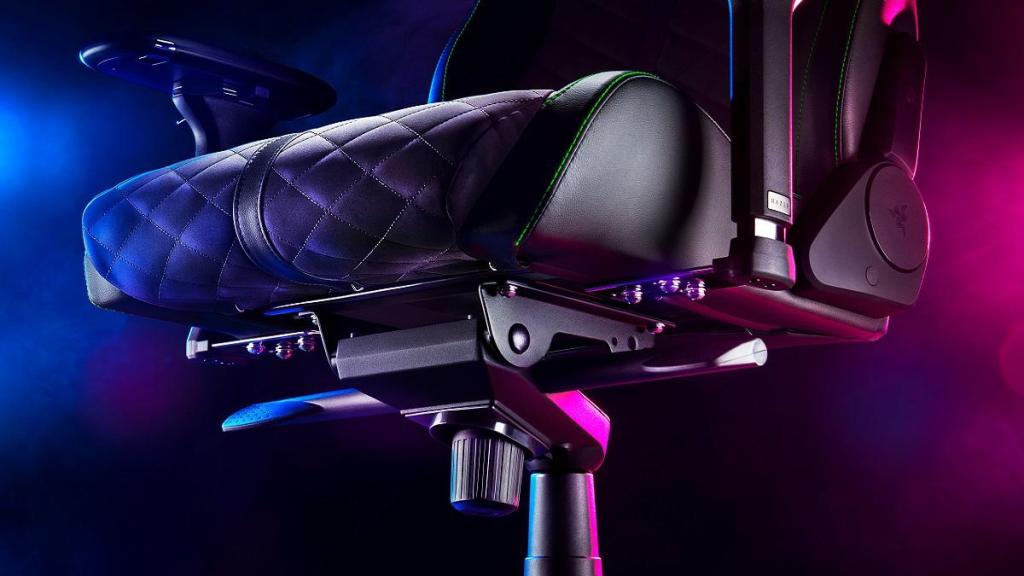The new Razer Enki has a tall back with a textured, quilted design that snakes its way up past a built-in lumbar arch towards a head pillow meant to support you during your long gaming sessions. It’s got adjustable armrests, surprisingly smooth caster wheels that allow you to whisk yourself about this way and that, and levers that make you go forward, back, up, down, and anywhere else you’d like. In short, it’s a gaming chair, and it’s easily recognizable as such without being as in-your-face as the “BY GAMERS, FOR GAMERS” Razer Iskur option that came before it.
Videos by ComicBook.com
But pretty much every gaming chair worth looking at has the features listed above aside from some design discrepancies like the quilted look and how chairs navigate lumbar support. Those are essentially the baseline for gaming chairs nowadays which means that if that sort of formula is followed, it seems impossible to make a bad chair. The Enki itself is far from bad and has its strong points, but it fails to do much of anything to make itself stand out from other options.
Take the base for example, the part of the chair sitters will become most familiar with for however long they use it. Measured back to front, the base measured the smallest compared to three competitors. That literal shortcoming is accentuated by the small dip in the base meant to nestle you comfortably back into the lumbar support. The result is an awkward point of contact between the front of the base that makes it feel like your legs are being pushed up and hanging over the edge even if your feet are flat on the floor. At 5’11”, I’m well within the recommended height for the Enki, but the base still feels too small in that regard even if it’s plenty wide enough.
The lumbar support, to the Enki’s credit, is pretty impressive. It’s borderline aggressive in its effort to preserve perfect posture, and it doesn’t give you much of an option when it comes to going along with its plans. Fewer options would normally be a drawback, but here, it’s always been a boon during long hours of play or work. The quilted design made with the eco-sustainable synthetic leather is aesthetically pleasing, but it does tend to catch clothes often which means frequent readjustments when things get out of order.
Like other chairs on the market, the Enki also comes with a memory foam head cushion (the Enki X chair does not), but it’s not a particularly useful one. This pillow’s outfitted with an elastic strap up top meant to wrap around the top of the seat’s backrest while a similar band on the bottom of the pillow buckles through openings in the backrest to keep it secure. By buckling it, however, it pushes down the pillow so far that it connected far too much with my shoulders to the point that my head barely touched it. Ignoring the bottom buckle and using the top strap only put it in a more favorable position, but it feels like it’s going to pop off the chair every time you stand up at that point. It’s either too large overall or again isn’t built with differing heights in mind, and neither of those make for a very useful accessory.

These problems won’t affect everyone, however, and if you can look past these inconveniences, the Enki does what it promises. It’s comfortable enough for long periods of rest and doesn’t make you ache afterwards with all thanks due to its built-in lumbar support. The $399 price point may make it a more appealing option considering how other gaming chairs can cost hundreds more, and as the promises it makes, the Enki fulfils most of them. Considering how much time you’ll be spending in a gaming chair while working or playing, however, it’d be more worth it to find one that perfectly suits you unless you’re just determined to round out a growing collection of Razer gear.
A Razer Enki gaming chair was provided by Razer for review purposes. More information on the Razer Enki and Razer Enki X models can be seen through Razer’s site.








